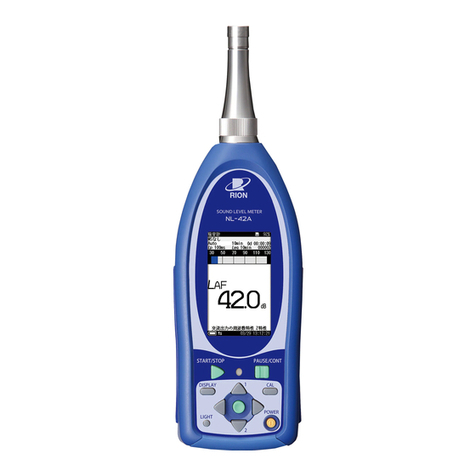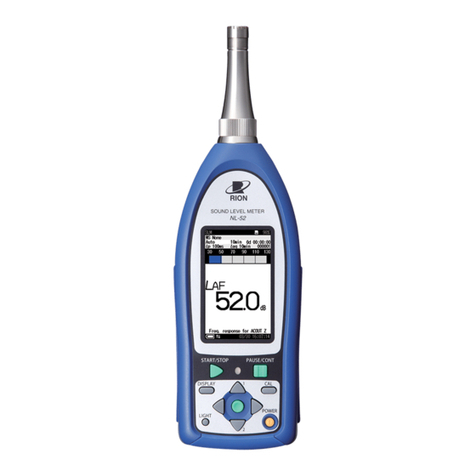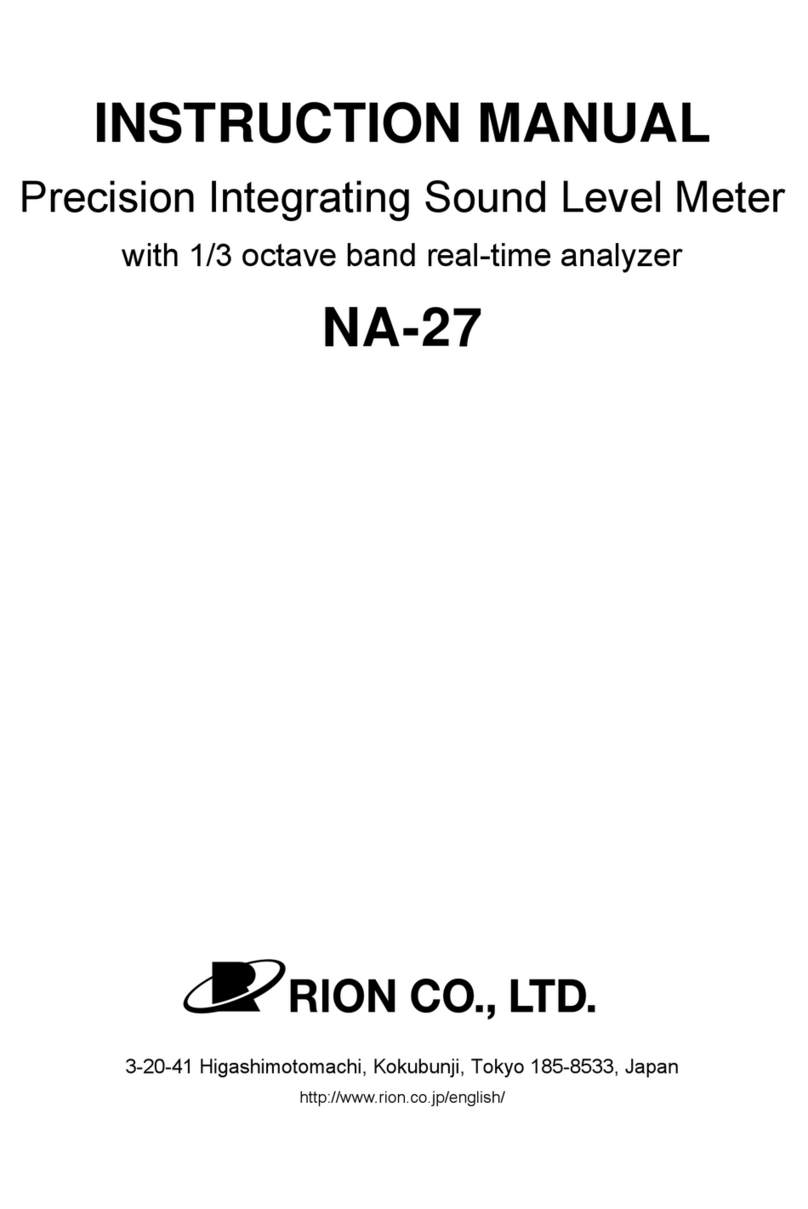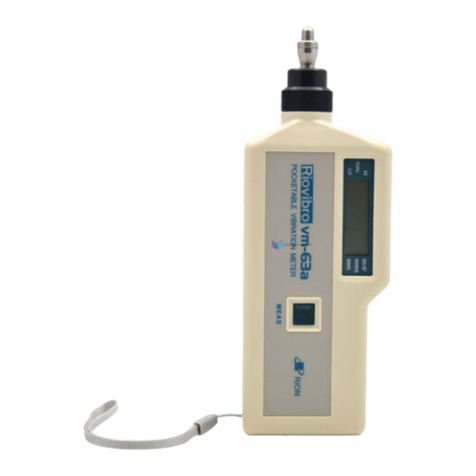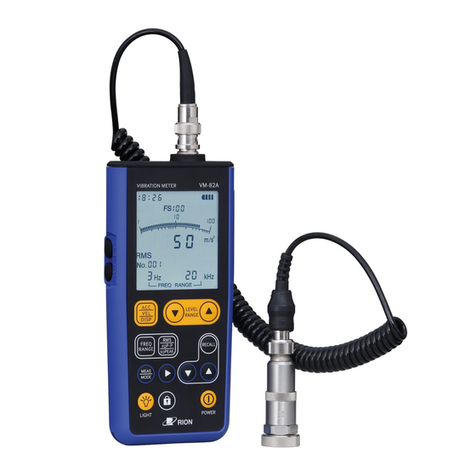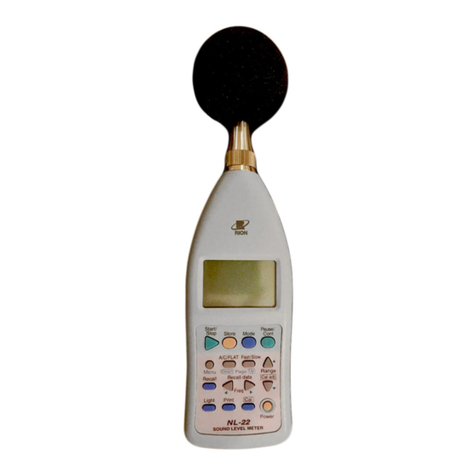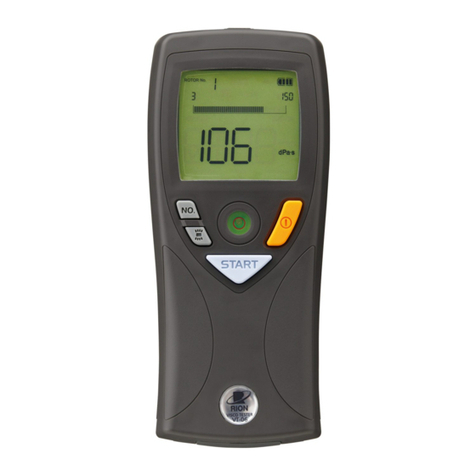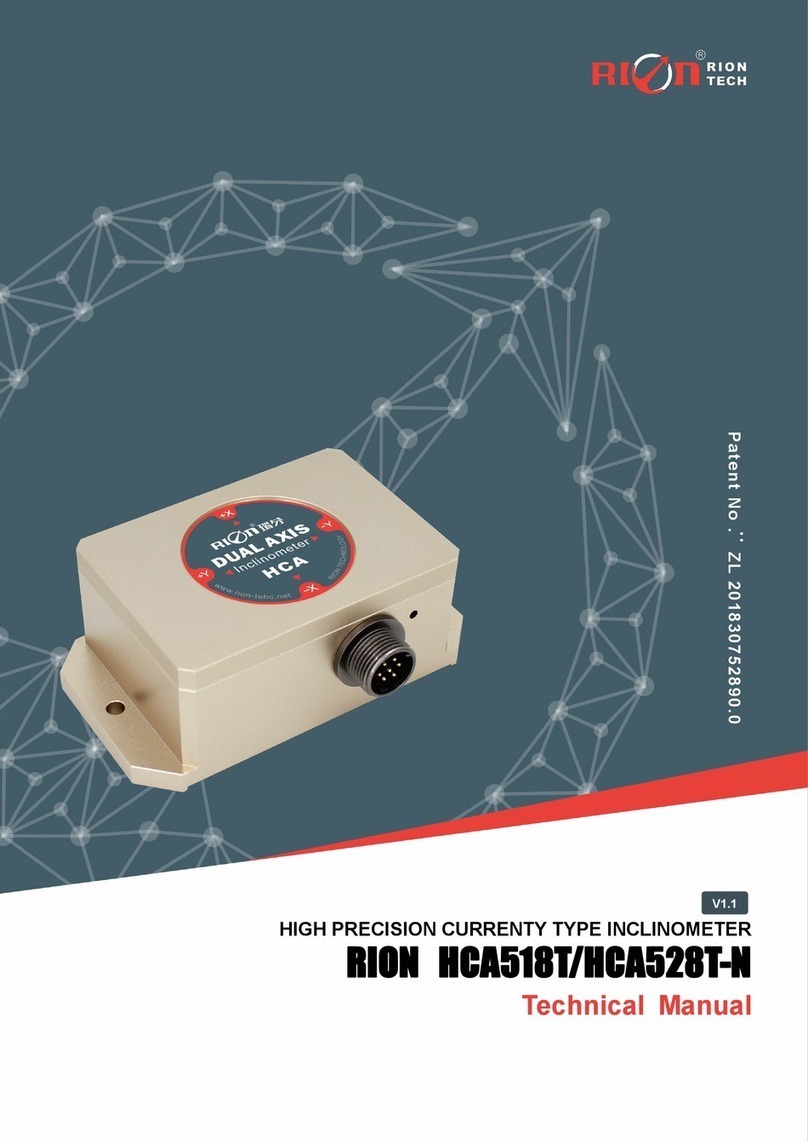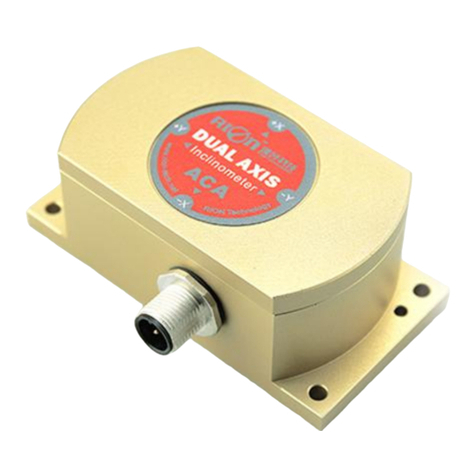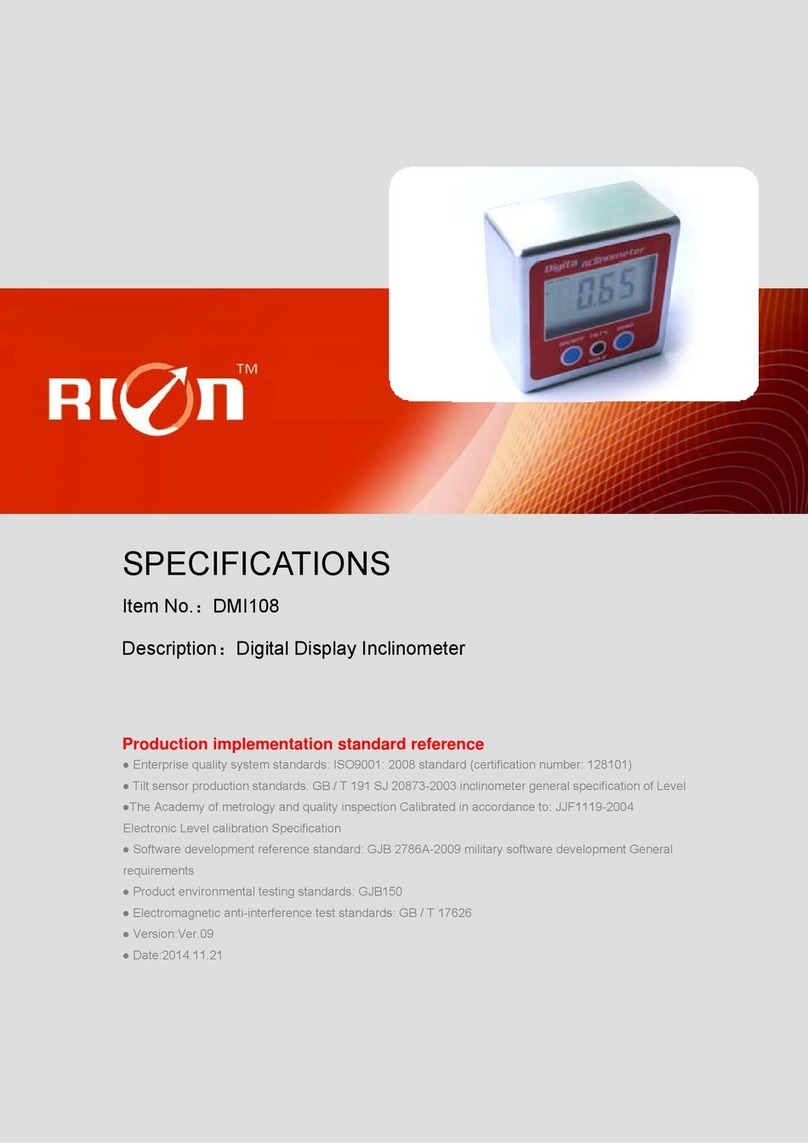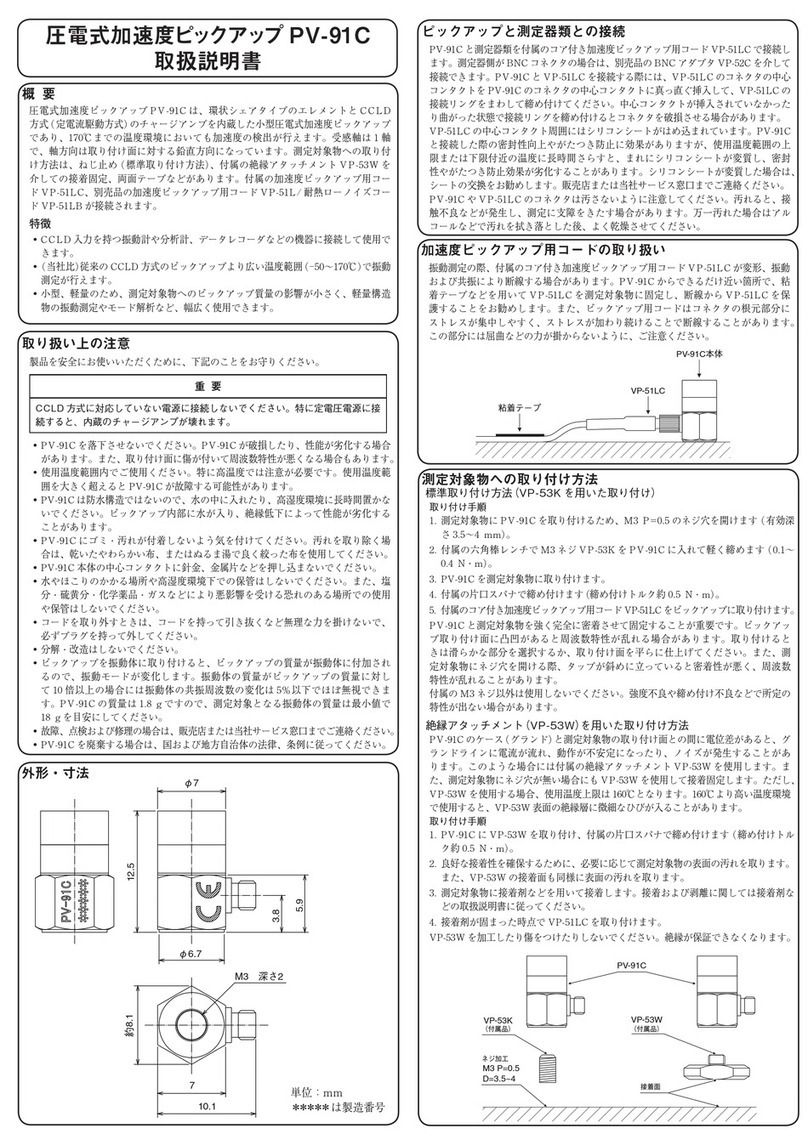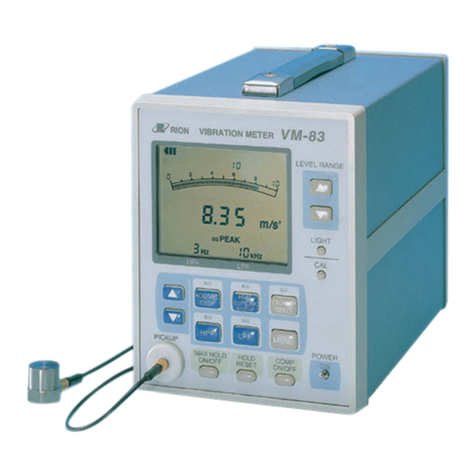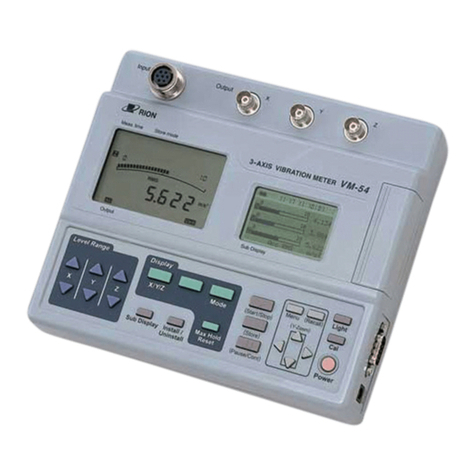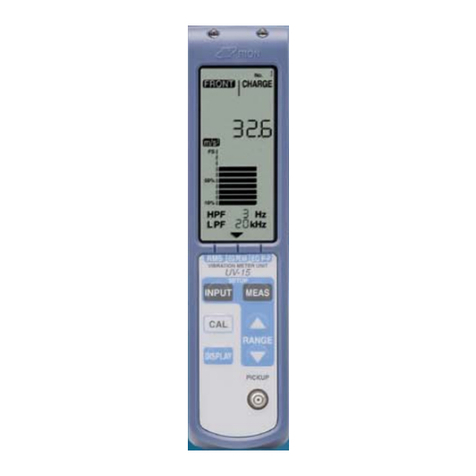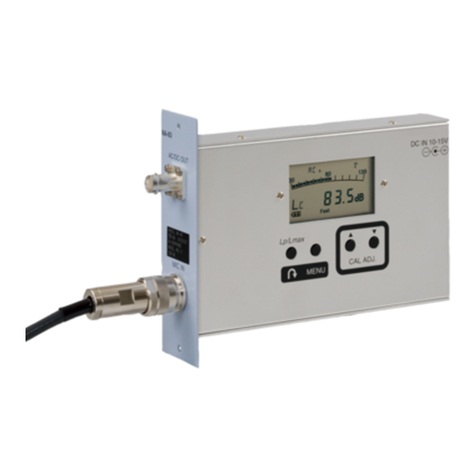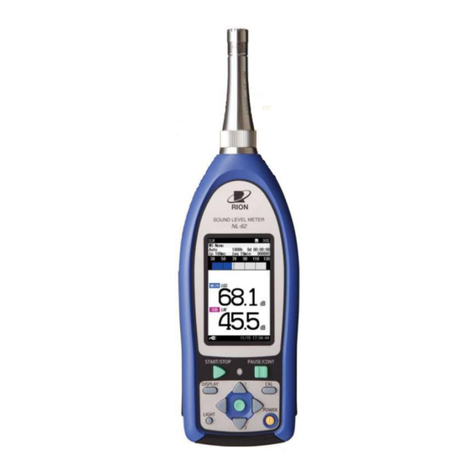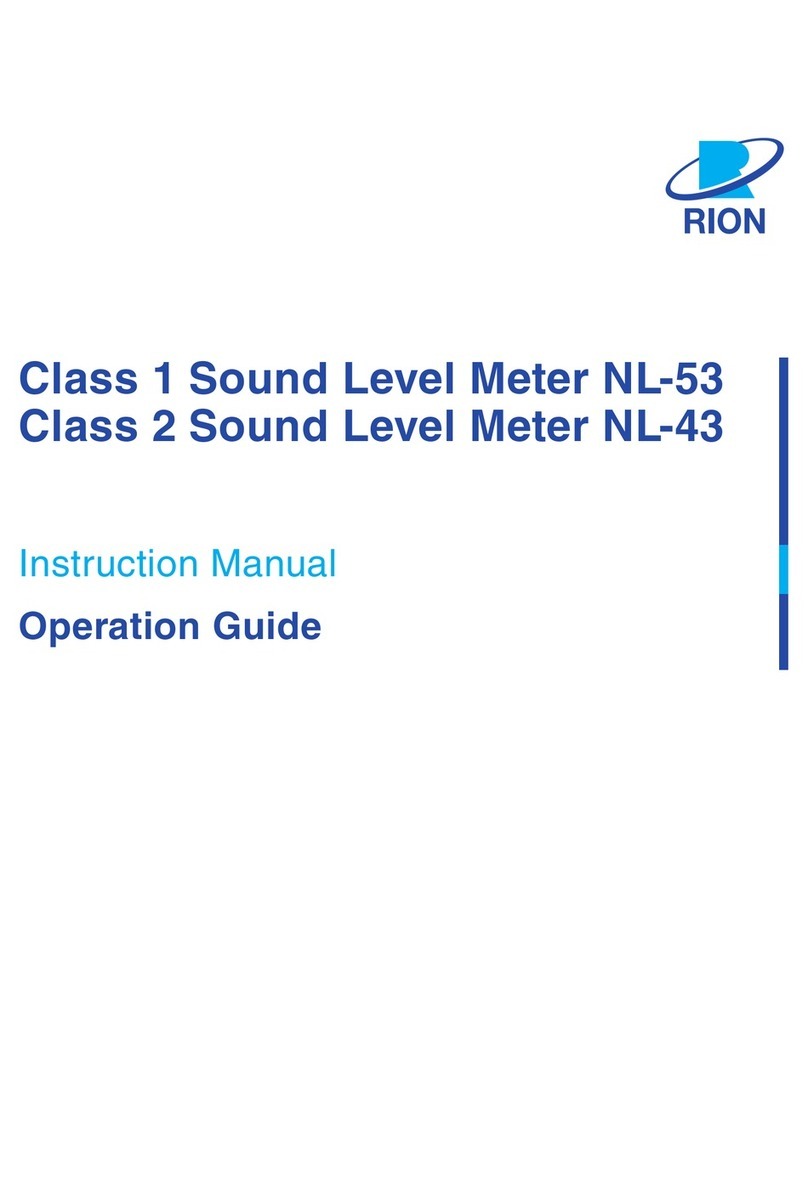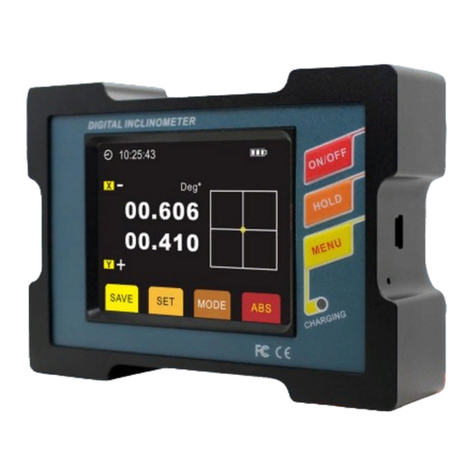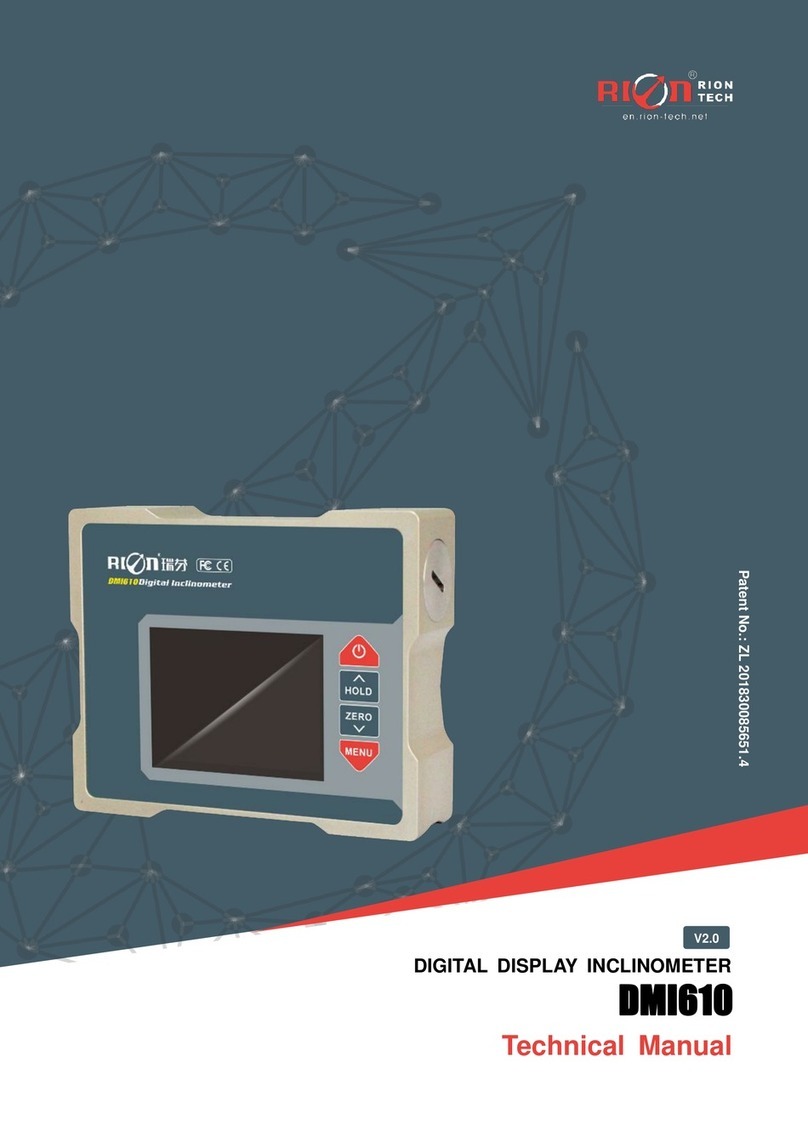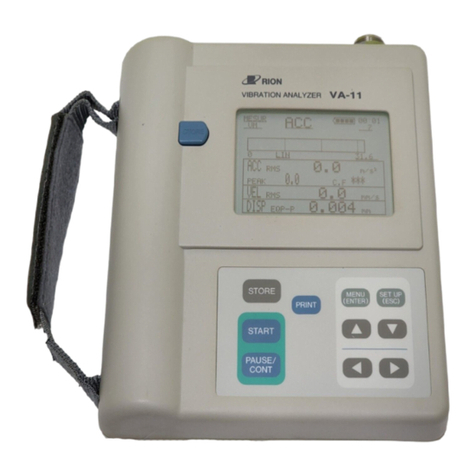
vii
Operation Modes ..........................................................................31
Input setup mode ....................................................................31
Sensitivity setting ..............................................................32
1) Direct input of sensitivity setting ...................................32
2)
Calibration with Sound Calibrator NC-75/NC-74
or Pistonphone NC-72A ................................................... 36
3) TEDS communication mode .........................................41
Setting the ID number ............................................................42
Measurement setup mode ........................................................44
Calibration mode (OUTPUT CAL) .........................................46
Measurement mode .................................................................47
Overload indicator LED ....................................................48
Bar graph indication ..........................................................48
Relationship between AC OUT signal voltage
and sound pressure level ....................................................49
DC OUT signal .................................................................50
Check mode ............................................................................51
Using the Interface Unit UV-22 (option) .................................52
Factory default settings ...........................................................54
Performance Characteristics .........................................................55
Frequency response characteristics .........................................55
Inuence of extension cable EC-04 series ...............................56
Specications ...............................................................................57
Reference Material .......................................................................62
Delay of output signal..............................................................62
Measurement Range ...............................................................63
User Filter ...............................................................................64
Maintenance parts ...................................................................66












